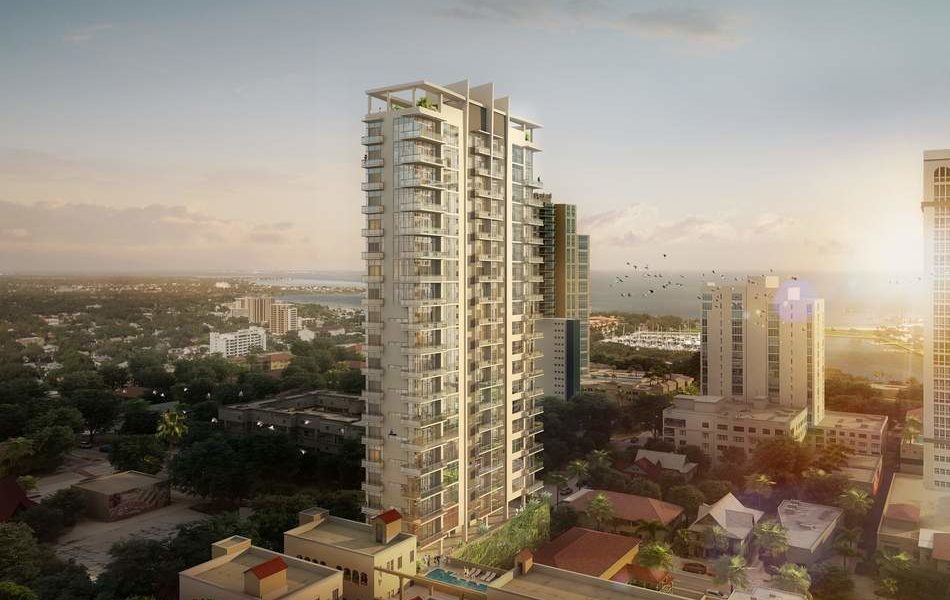Opinion
Preservation vs. development: The beat goes on

OPINION
By Jonathan Kile
In a rare case of a developer coming up short, the St. Petersburg City Council recently rejected Michel Regignano’s plans for a 23-story condo tower, dubbed Bezu, on 4th Avenue North and 1st Street in downtown St. Petersburg. Residents complained that Bezu’s size was out of scale with neighboring properties, particularly in the way it dwarfed the historic seven-story Flori de Leon apartments next door.
The Bezu met some basic zoning criteria for the lot, but because of their request for increased density, the design was rejected by the city’s Development Review Commission (DRC). Developers found themselves appealing that decision before City Council.
Over the course of several hours on Feb. 1, City Council heard dozens of statements from residents who voiced specific concerns about the Bezu. Opponents had solid standing in highlighting the developer’s failure to meet some basic criteria, including dialogue with surrounding property owners and appropriate scale. In addition to concerns over its sheer height, speakers had issues regarding the lack of set-back from the sidewalk on 4th Avenue and the parking structure’s large footprint and proximity to the Flori de Leon (a mere 7 1/2 feet from resident’s windows).
After weighing the evidence, Council voted 4-4, failing to overturn the DRC’s unanimous rejection of the project.
Tampa Bay Times journalist Susan Taylor Martin quoted Regignano after the loss as lamenting, “The huge issue to me is that I did everything required.” He added: “Why would a developer want to continue in St. Pete?’’
It’s easy to see why Regignano was stunned, when the city has a track record of not following its own laws when it comes to issuing permits. For example, the Pheil Building at the corner of Central and 4th Street was demolished recently, despite the property’s lack of an approved site plan. The so-called “cheese grater” covered in mid-century aluminum mesh hid an attractive,1920s-era historic building on property owned by a California investment group with an unusual lease. No one will argue that as it stood, the one-time bank building was an eyesore in the heart of our city. But when pressured by the potential sale of the property, the city broke its own rules and approved the demolition permit.
When a lawsuit brought by St. Petersburg Preservation threatened to delay the sale, a settlement was reached. Seeing that the aluminum façade would never be removed and the structure would remain vacant, preservationists agreed to walk away for a $100,000 settlement. This paved way for the sale of the property and creation of the current fenced-off “park,” off-limits to human activity.
It’s the largest settlement paid in a preservation dispute in St. Pete, but to a developer, it’s the price of a parking space.
If there’s a knock on preservationists, it’s that they are constantly fighting to stop something, and are rarely involved in the conversation about what they wouldn’t mind seeing. I sat down with Emily Elwyn, board president at Preserve the ‘Burg (formerly St. Petersburg Preservation) to talk about what preservationists might consider acceptable in downtown. She pointed out that the primary issue with preservation is that city’s rules make it practically impossible to create a local historic district of any significant size, protecting multiple historic properties in the context of their modern surroundings. They are forced to fight the battles property to property.
A few preservationists worked closely with Mayor Rick Kriseman and city staff to craft language for a new ordinance that would, in a nutshell, take the ability to just apply for a district from nearly impossible to very difficult. Council must still approve any application for designation. The effort was marginally successful, and the threshold to apply for local historic district designation was lowered slightly. The compromise resulted in a textbook example of “unintended consequences.”
Under the new criteria for initiating an application (affirmation from 50% +1 of included property owners), there has been a succession of “micro” districts created by bands of 10-20 neighbors who all agree they don’t want an investor-built, hulking cookie-cutter house towering over their 100-year-old bungalow. The sudden increase in applications for these one or two-block districts has strained city staff.
Regignano predicts that the rejection of Bezu will send investors fleeing the city, but is this the kind of investor we want shaping what little vacant land we have? “We’ve reached a point in St. Pete where we don’t have to say ‘yes’ to everything,” responds Elwyn.
So will Bezu run for the suburbs? No. It’ll be back with a slightly shorter design. The new concept should sail through the approval process because a slightly lower “floor area ratio” might not require input from anyone. The developer will still make plenty of money, and future Bezu residents will still park their cars less than 10 feet from their Flori de Leon neighbors’ bedrooms.
And development will still pour into St. Pete until the economy cycles down again.
The only tool in the effort to balance old and new is to fight developers when they enter that gray area when a project asks for more density. So accustomed to ending up on the losing end of these battles, Elwyn was a bit surprised when residents prevailed against the Bezu plan. The small victory doesn’t change the fact that the rules do our city a disservice by repeatedly pitting the desires of people who live here against those who often have little history in our area or are not mindful of the larger picture of growth in the city.
Jonathan Kile has had a front row seat to more than a decade of battles between preservationists and developers, as a resident of downtown and the Old Northeast, and spouse to the former executive director Of Preserve the ‘Burg.











